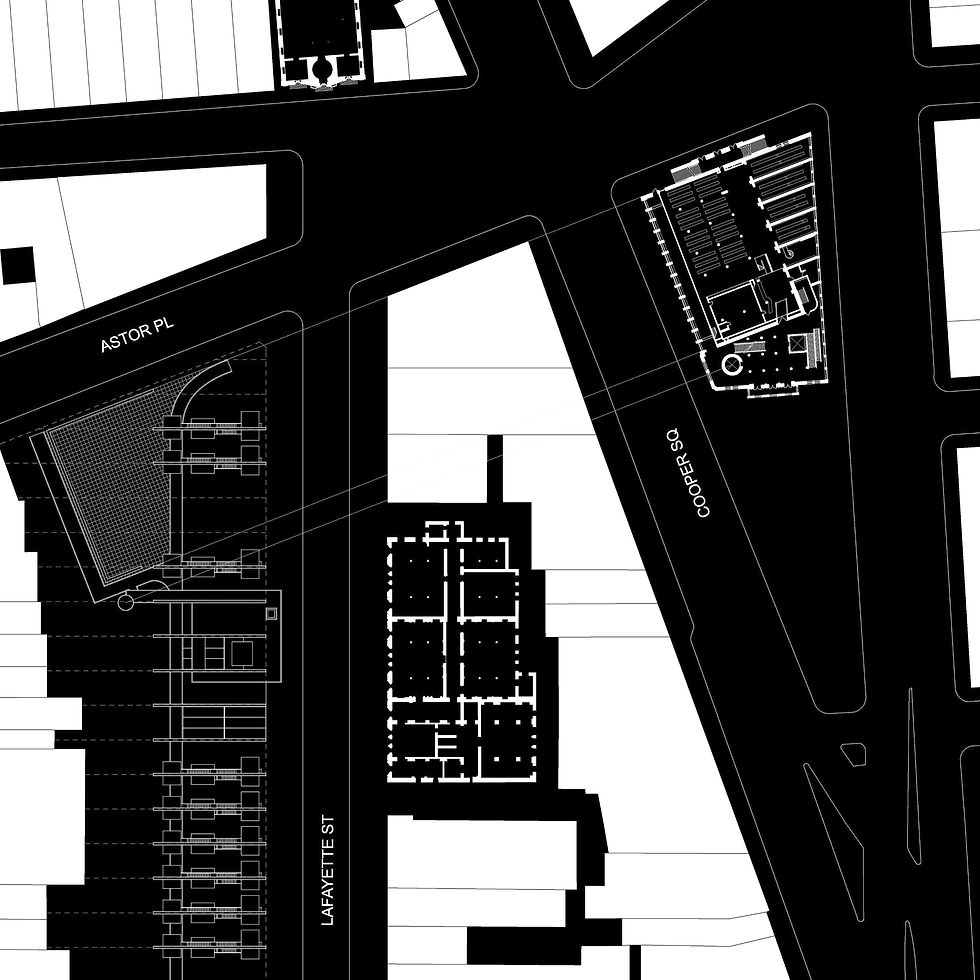Synergistic Residences: Rooms within the Urban Fragment
Studio: Fourth Year Spring 2012
Faculty: D. Lewis, D. Meridor, D. Sherer, M. Veledar and P. Schubert
Lafayette Street, near Astor Place, registers an important civic memory of civic figures, and civic heroes that have since disbursed. The street is unified by the classical facade of the LaGrange Terrace, built for John Astor in 1832, which stood within a precinct of public institutions that have now been smothered by the evolving context of Lafayette Street, and remains today as a fragment.
The proposal embraces Astor’s remaining bearing-wall structure and projects a sequence of freestanding walls that reveal the structural rhythm of the original building; from which new volumes cantilever. This structural approach liberates the historic parti-wall’s, expressing them as elements exposed within a new civic space. The once-enclosed rooms are now articulated as floating volumes of intimate dimension within the urban fabric.
This field of free walls liberates the ground plane. The street – the civic datum – once provided a social function of pure service but is now transformed into an open continuum, creating a distinct new civic fabric. A place for civic figures to return, activating each freestanding wall as a unit for UN diplomats to occupy; contemporary civic figures akin to the founders of the LaGrange Terrace.
The autonomous planes are linked and pierced by an artery of passage that mobilizes a synergy among domestic, cultural, and public activities provided within the elements of this architecture.








